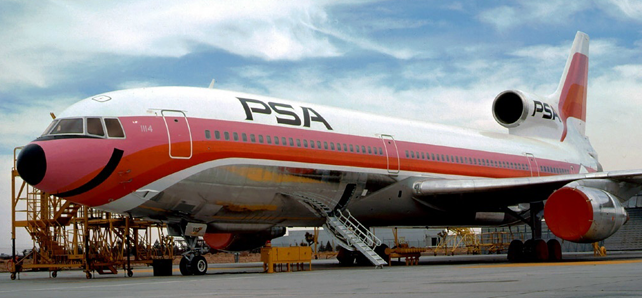You are using an out of date browser. It may not display this or other websites correctly.
You should upgrade or use an alternative browser.
You should upgrade or use an alternative browser.
UA flight #328 loses engine over Broomfield CO.
- Thread starter c502cid
- Start date
MolaKule
Staff member
60 tons at what RPM ?
MolaKule said:In terms of forces, for example, the RR RB211-535E4 fan had a 74" dia., a fan tip speed of 1500 ft/sec. Each 15-lb. blade was subjected to a centrifugal force of 60 tons!
Use Vbladetip = Omega*Radius, or 1500 ft./sec. = Omega*Radius, where Omega is the angular velocity in radians. Then use appropriate dimensions to solve for RPM.
Fan tip speeds and Turbine blade tip speeds are what we use in aerodynamic studies.
Use Vbladetip = Omega*Radius, or 1500 ft./sec. = Omega*Radius, where Omega is the angular velocity in radians. Then use appropriate dimensions to solve for RPM.
Fan tip speeds and Turbine blade tip speeds are what we use in aerodynamic studies.
I never really got a feel for English units. Makes it a huge pain to calculate. While I always use them for everyday understanding of speed and measurement, I always preferred metric for actually calculating anything.
I had a college "engineering" class on techical communications. I had a short presentation on a subject I was interested in at the time, which was bicycle wheels. One classmate had a presentation on rollerblading. However, I was trying to explain why internal mass was considered more important than total mass when it came to improving the acceleration performance of a bicycle wheel. Of course reducing the weight of the rim, rim tape, tube, and tires created the greatest benefits, while the spokes were less, and at the hub was the least. These days it's less about those weights and more about aerodynamics.
In the 1970s when Rolls-Royce developed the RB211 to compete against P&W for a Boeing contract as well as being sole-source power for the Lockheed TriStar it was developed with what was the world’s first carbon fiber fan blades. Those failed a required test for FAA/EAA certification. Rolls had to declare bankruptcy and the British government controlled them while they worked on a Ti replacement blade.I've been following this story for a while. How's this for a really oddball suggestion? I'm hearing one guy claiming that the only correct way for P&W to address this is to use composite fan blades similar to what's used in GE90 engines and that the titanium alloy blades are no longer acceptable in the application for safety reasons.
as for today, GE and Safran have the edge with carbon fan blades - Rolls is rumored to introduce them on a future development of the Trent series.
In the 1970s when Rolls-Royce developed the RB211 to compete against P&W for a Boeing contract as well as being sole-source power for the Lockheed TriStar it was developed with what was the world’s first carbon fiber fan blades. Those failed a required test for FAA/EAA certification. Rolls had to declare bankruptcy and the British government controlled them while they worked on a Ti replacement blade.
as for today, GE and Safran have the edge with carbon fan blades - Rolls is rumored to introduce them on a future development of the Trent series.
You should see their prototypes.
I remember the L-1011 because PSA was advertising them. I couldn't quite figure out why a regional carrier would need to fly something that big. They were way bigger than their 727s.

At time 13:30 it looks like the end of the blades are rubbing on the intake cowling. Is that normal ?
I believe that’s normal. This explains it as an “abradable shroud”. It’s supposed to have a tight fit.At time 13:30 it looks like the end of the blades are rubbing on the intake cowling. Is that normal ?
Use Vbladetip = Omega*Radius, or 1500 ft./sec. = Omega*Radius, where Omega is the angular velocity in radians. Then use appropriate dimensions to solve for RPM.
Fan tip speeds and Turbine blade tip speeds are what we use in aerodynamic studies.
You dumbed it down so we can understand.
74" dia., a fan tip speed of 1500 ft/sec.
That works out to about 4650 rpm, which matches other references that the fan speed of the most powerful version is 4500 rpm.
1500 ft/sec is 1020 mph which is interesting I would think that all parts of the blade should be moving less than the speed of sound.
That works out to about 4650 rpm, which matches other references that the fan speed of the most powerful version is 4500 rpm.
1500 ft/sec is 1020 mph which is interesting I would think that all parts of the blade should be moving less than the speed of sound.
He is back in the seat again.
Similar threads
- Replies
- 72
- Views
- 4K
- Replies
- 28
- Views
- 2K
- Replies
- 39
- Views
- 4K
